Arzette: The Jewel of Faramore Review
Once upon a time, Nintendo and Sony had a falling out. This led the former to team up with Philips for CD based games, with the collaboration culminating in a series of infamous games for the CD-i. Known more for their eccentric cutscenes and animation, these games have been memed for years since.
Enter Arzette: The Jewel of Faramore, which aims to capture the magic of these titles — more specifically, the 2D platformers Zelda: The Wand of Gamelon and Link: The Faces of Evil. From the developers name ( Seedy Eye Software) to the overall style and use of animation, Arzette is designed as a love letter to the CD-i Zelda games.
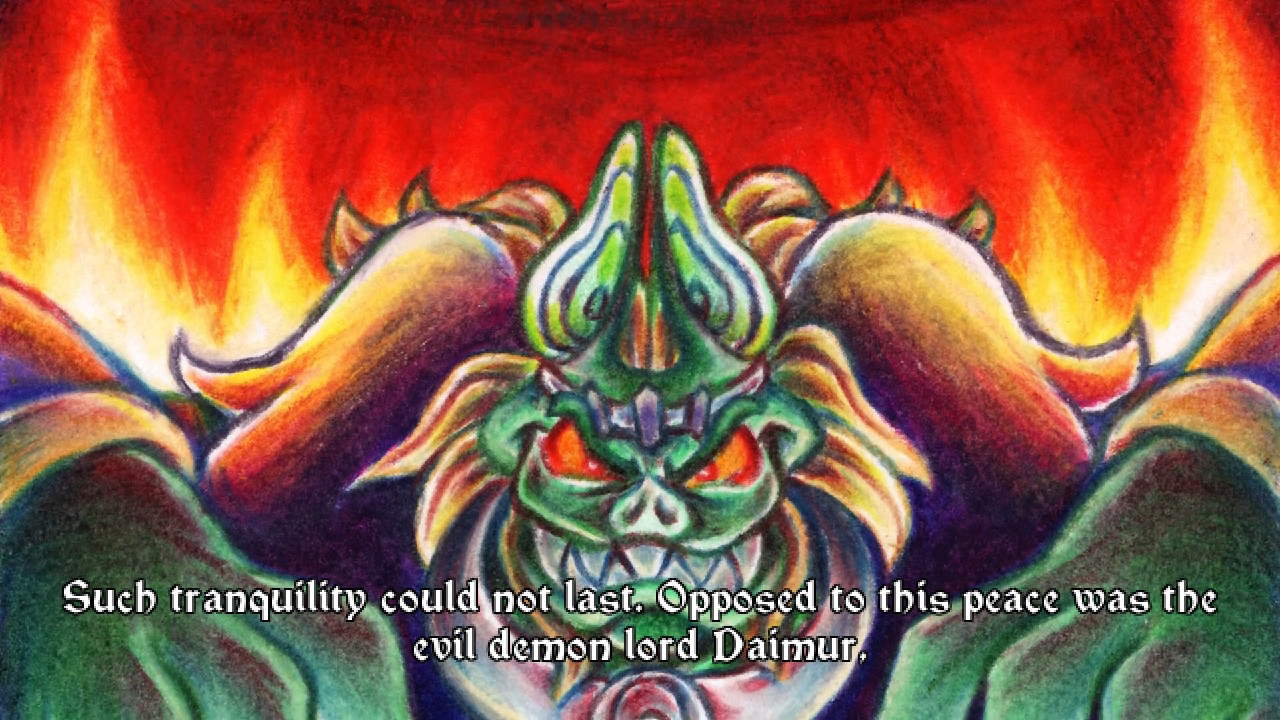
A link to the past
This is seen almost from the start, with the opening (drawn in a much more conventional style that what’s seen after) detailing a story that is very clearly riffing off the plots of The Wand of Gamelon and The Faces of Evil. You have a big evil guy, a somewhat serious princess and their goofy helper, and a corrupt Duke who is sentenced to scrub all the floors in Hyrul- I mean Faramore.
Following this, every cutscene features the more wild animation you’d see on the CD-i. Characters moving in exaggerated ways or the camera being far too close to their faces. It’s a mixed bag, sometimes not in an intentional way. While many of the animation does match up pretty well with the Zelda CD-i titles, others are fairly stiff, almost looking more like 3D rotoscoped animations.
The voice acting is also somewhat mixed, though that isn’t too far from Arzette’s inspirations. Arzette herself sounds decent, and you even get some returning voice actors from the CD-i titles. However, the actual audio quality is oddly all over the place. Rather than just stilted in an intentional way, some characters straight up sound like they were recorded using an old webcam.
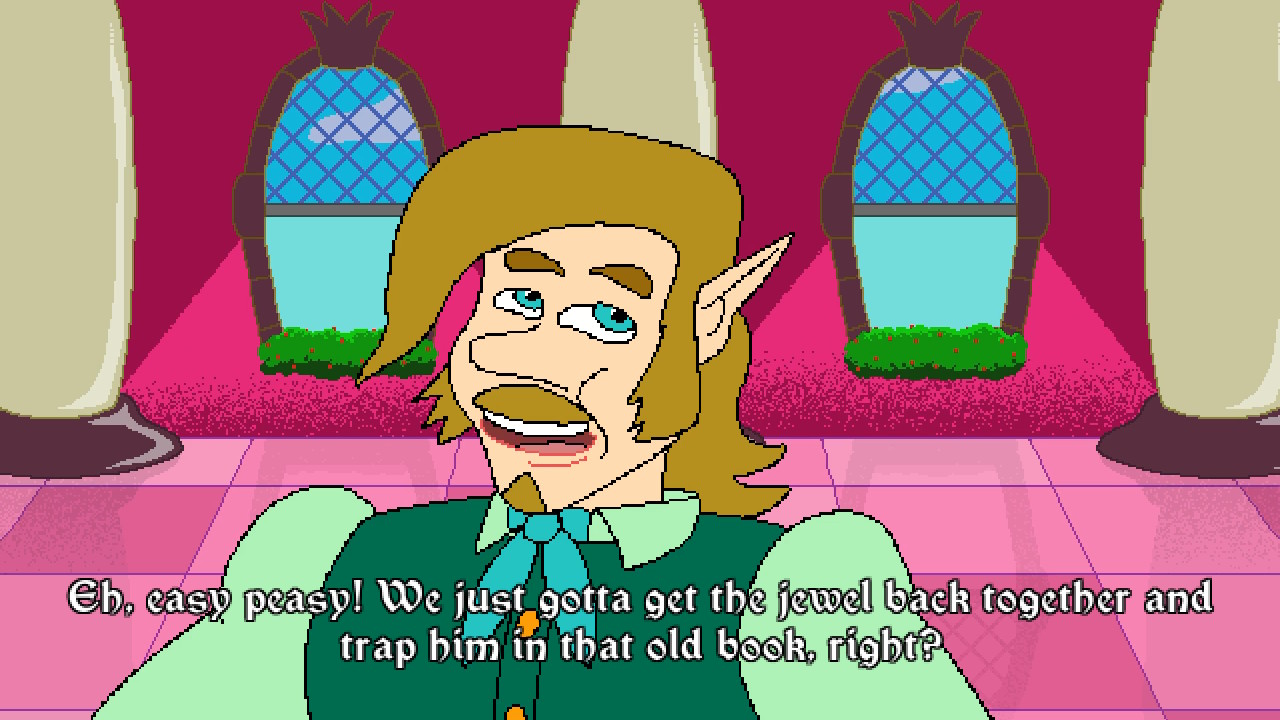
At the very least, I was still interested to see which odd character I’d encounter next. Arzette: The Jewel of Faramore features a lot to interact with, even if you’ll likely only talk to them a couple of times each. You have the obvious references to characters like Link, Gwonam, and shopkeeper Morshu. Other non-CDi Zelda characters also get a turn, including a certain blue hedgehog.
It’s an imperfect, but still an overall solid stab at recreating The Wand of Gamelon and The Faces of Evil’s unintentional comedy. There’s the occasional attempt to tell an actual serious story that falls flat, but with how short the game is this never lasts for too long.
While goofy cutscenes managed to save the CD-i Zelda games from obscurity, their gameplay has never been seen as favourably. Both 2D platformers were clunky, obtuse, and frankly not fun.
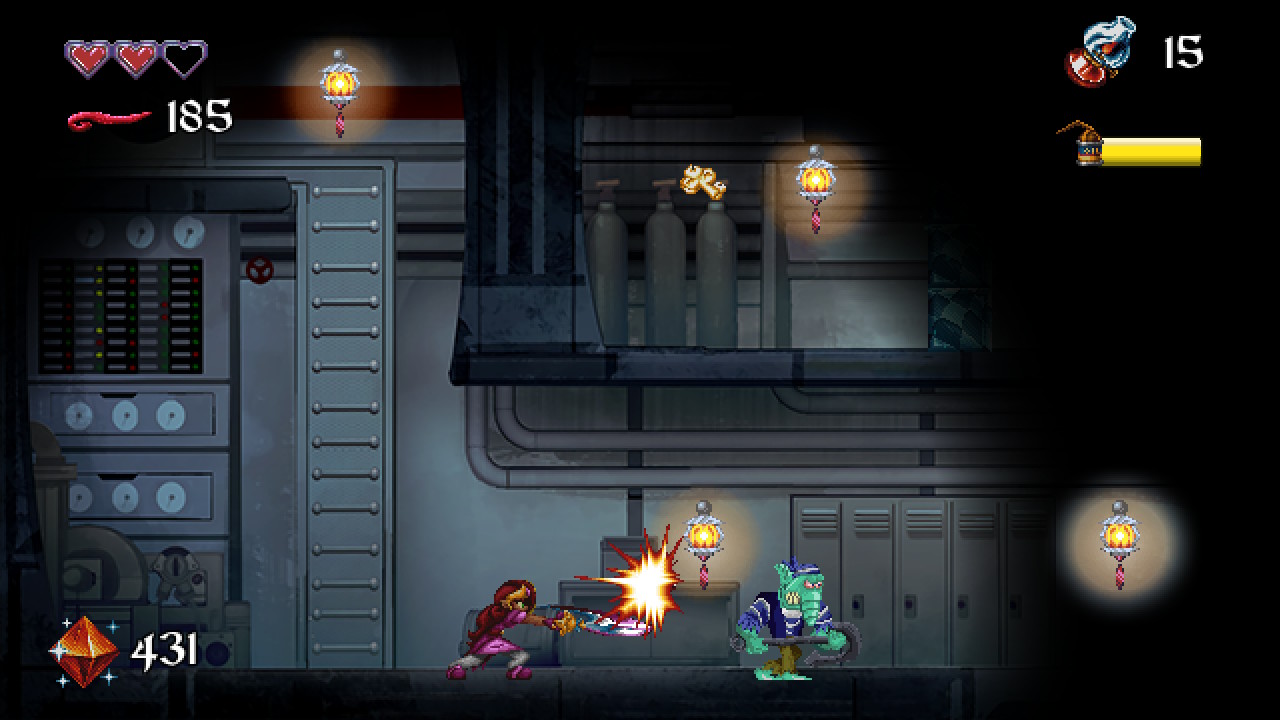
Better gameplay, but still room for improvement
Arzette: The Jewel of Faramore aimed to take the base of what The Wand of Gamelon and The Faces of Evil tried to do, while turning it into something that actually functions properly. Better controls (though you have the option to use something closer to the CD-i titles), smoother performance, and more obvious goals.
The general moveset you have access to is a simple jump, crouch — with the iconic(?) duck walk — and sword swings. Exploring also unlocks a shield, double jump, and a gun that can eventually fire multiple coloured bullets. It works well enough, and most enemies can be killed in a single hit.
That’s not to say Arzette is an amazing game to play all the time. While backgrounds are often quite nice to look at (even if they’re at an appropriately low resolution), it can be hard to tell what actually counts as a platform. Enemies can also be hard to hit at times due to your sword’s lack of vertical reach. This is especially true for the bug enemies, which like to fly just above your sword swings.
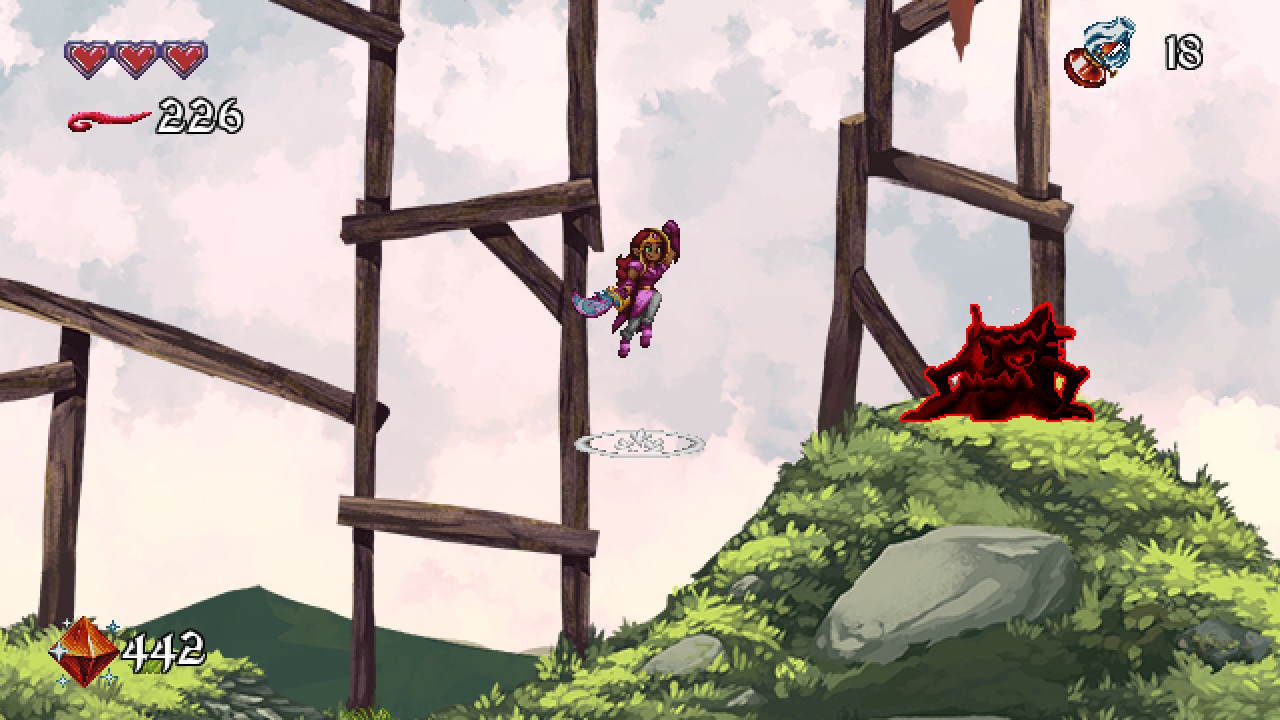
Thankfully, you never lose much progress. The default difficulty includes no health pickups, but on death you just quickly respawn in the area you died. Most areas are quite small, and you keep any collectables or gems you picked up along the way.
A lack of challenge is actually somewhat welcome here, as you’ll be exploring each area multiple times over during the story. Progression revolves around reaching the end of each area, either unlocking more or finding a new item/quest, then going to previous areas once you reach a roadblock.
Arzette does a good job of guiding you in the right direction, leaving exclamation markers on the word map for areas that you can visit to unlock new things. The small size of each area also means that, even with repetition, you’re not having to spend too much time backtracking.
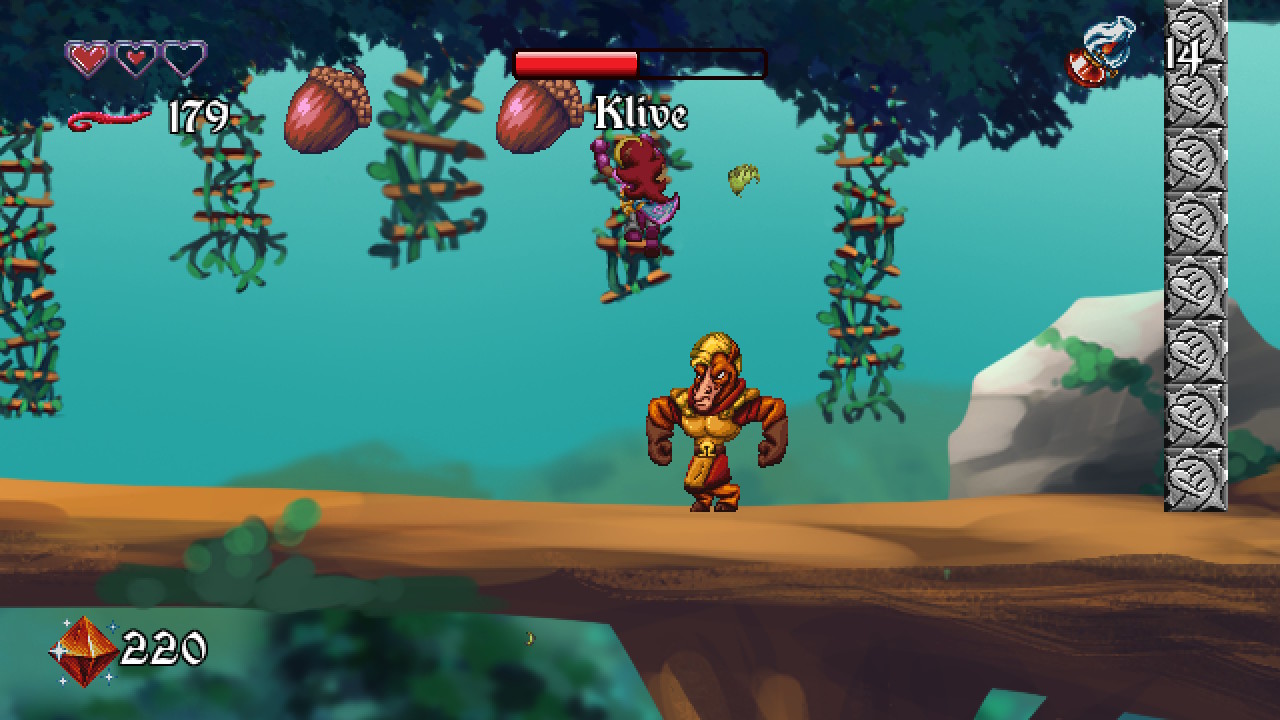
The overall goal is to collect candles hidden in the world, which unlock the boss fight of certain areas. Each boss fight is super simple — one literally only required me to stand still while holding the shield button. There are a few other things to find like coins and the occasional health upgrade, but with the bosses out of the way, you can just head to the final area.
You’re always making progress, something that wasn’t always the case in the CD-i Zelda games. There are also enough secrets to find that you have something to aim towards even after the short main story is done.
Arzette: The Jewel of Faramore Review | Final Thoughts
Arzette: The Jewel of Faramore doesn’t quite reach the goofy highs of The Wand of Gamelon and The Faces of Evil, and its gameplay is still going to pale in comparison to modern platformers. But as a homage to the CD-i, it’s still full of charm (and actually decent to play, unlike the aforementioned games). If you go in knowing what to expect, then you’ll have a decent time
We reviewed Arzette: The Jewel of Faramore on Nintendo Switch using a copy provided by the publisher. It is also available on PS4, PS5, Xbox Series X|S, and PC. Physical copies are being handled by Limited Run Games, though these are only available until March 31, 2024.
Join The Discussion
Rice Digital Discord
Rice Digital Twitter
Rice Digital Facebook
Or write us a letter for the Rice Digital Friday Letters Page by clicking here!
Disclosure: Some links in this article may be affiliate links, which means we may earn a small commission if you make a purchase after clicking on them. This is at no additional cost to you and helps support Rice Digital!
- Class of Heroes: Anniversary Edition Beginner’s Guide - April 25, 2024
- Farming sim SunnySide gets updated demo ahead of launch - April 24, 2024
- Metaphor: ReFantazio releasing October 2024, new gameplay revealed - April 24, 2024



